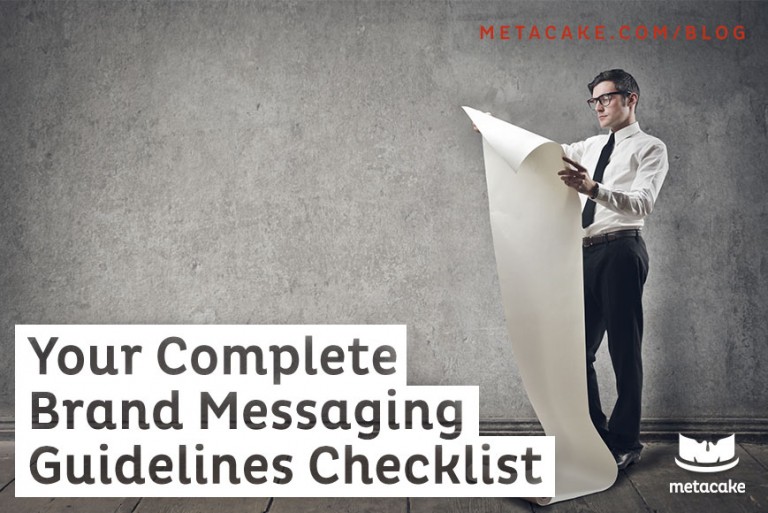Having brand messaging guidelines for your company is vitally important. When you do brand messaging guidelines right, there are a bevy of benefits.
First, it allows everyone internally to buy into the brand values and mission And second, your entire team is on the same page on how to communicate these values and missions to the outside world (your potential customers).
Internally, this creates cohesion among your team. Employees come to join your company because of these brand guidelines. They are joining a movement, not just looking for a paycheck. It creates loyalty and a focus on customer care.
Externally, this creates consistency for your audience across all touch points. Your brand messaging is the same whether your customer interacts with you through social media, walks into a physical store, or reaches out to customer service.
So, make sure to define your brand messaging guidelines.
Brand Messaging Guidelines Checklist
Here’s the basic process we follow, start to finish, when doing a branding project.
1. Define Your “White Hot Why”
This is the “why” of your brand. Why does your brand exist? Why did the founder start the company? What drives you to get out of bed and go to work very morning?
Define this and put it down on paper for everyone to see.
2. List Core Values
What are the core values of your brand? What do you stand for?
For example, here are some of our core values at Metacake:
- Discipline
- Organization
- Transparency
- Leadership
- Care about the details
- Healthy Growth
Once these are defined, everyone internally knows these values. They then should be used as litmus test for all of the work that you do and brand messaging that goes out the door going forward.
3. Clarify Your Mission
This is the core public message of your brand, and should be the summation of the two items above: your white hot why and your core values.
To be clear, we’re not talking about a gigantic corporate meaningless mission statement a la 1990s. We’re talking about a simple and meaningful statement about why you exist that is the guiding and aligning statement for everything you do.
Let’s take Wendy’s as an example. Their mission statement is the following:
“The mission of Wendy’s is to deliver superior quality products and services for our customers and communities through leadership, innovation, and partnerships.”
As Guy Kawasaki states in his article on mission statements, “Don’t get me wrong. I love Wendy’s, but I’ve never thought I was participating in ‘leadership, innovation, and partnerships’ when I ordered a hamburger there.”
Instead he proposes a simple mission statement of “healthy fast food.”
Now, that may not be the best mission statement for Wendy’s, but it certainly provides more of a guiding light than their current mission statement.
Our mission statement at Metacake is this: to create experiences that matter to help grow businesses that matter. Learn more about our mission.
4. Execute the Elements
Come up with the name, tagline, and logo for your brand. These should come out of the why, the values, and the mission you have already defined. In case you didn’t get it yet, once you define your brand guidelines, everything you do (yes, EVERYTHING) should be checked against them.
If something isn’t in alignment with your brand, make sure you think again before proceeding.
5. Package It All Together
Make sure to create a brand guideline document that packages all of these elements together and distribute it amongst all current and future employees. Now that you’ve spent all of the time to create these guidelines, make sure to be using them.
